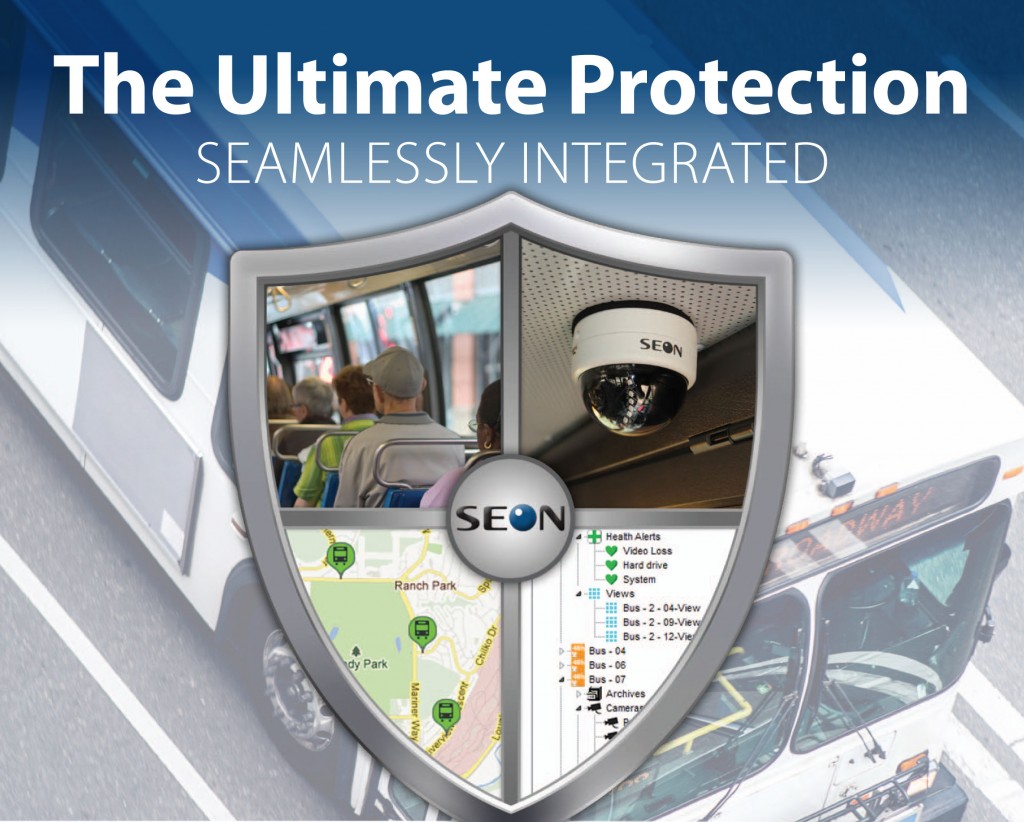Public transit authorities face numerous challenges in keeping drivers and passengers safe and secure on-board. Whether the concern is public safety, incident management, risk reduction, or financial restrictions, mobile surveillance and fleet management solutions can help. These solutions give you the security of knowing what really happened at an incident, and can even prevent costly litigation. When you are looking at beefing up your transit security program, how do you prioritize your investment and make the right decisions? Read on to find out what we think are the top 10 must-haves (and a few great tips) for public transit on-board security:
1. Mobile video surveillance systems
Mobile surveillance systems promote a safe environment for both public transit passengers and employees, as well as deter crime, identify security threats, and reduce false injury claims. They can also assist with managing escalating fuel and maintenance costs, ensuring that drivers maintain good driving practices, and stay on designated routes. Surveillance video footage has also been used to train drivers in real-life scenarios, increasing security even further.
2. DVR system with the appropriate storage capacity for your fleet
Be sure to check your video retention policy to find out what size storage capacity suits your needs — the longer you wait to retrieve video from the bus, the bigger the storage capacity you will require. Typically, 320GB is the smallest storage recommended — to ensure that you have video available when you need it.
3. Outdoor cameras
Outdoor cameras are an important investment for transit buses. Exterior cameras allow you to record and accurately investigate any reported slips and falls of passengers entering and exiting the bus, side impact accidents, and provide footage for driver training. Exterior cameras further enhance litigation prevention. For example, if your bus driver is being accused of cutting a vehicle off, the outdoor footage can show exactly what happened. We typically recommend installing a camera at each entrance or exit as well as a front-facing camera on the rear of the driver’s side of the bus.
4. DVR lock box
Security lock boxes are a must-have to keep your system safe and protected, while still monitoring and providing easy access for servicing on-board.
5. Video management software
It is a good idea to invest in video surveillance technology, but it can be time and resource-consuming to manually retrieve footage as well as manage all the equipment and data for an entire fleet. Wireless technology paired with video management software, like Seon’s vMax® Commander, can ease this burden and allow you to remotely monitor your DVR, hard drive, and camera status to ensure all on-board events are captured. You can also schedule automatic downloads of recorded data from a vehicle from the comfort of your office.
6. Office video viewing stations
To facilitate easy viewing and archiving, it a good idea to set up a least one office workstation with a DVR bay, monitor, photo printer, and video viewing software. Also make sure you have a well-understood policy for handling and viewing video, to ensure you protect the chain of evidence.
7. Wi-Fi networking with mobile (wireless bridge) or roaming capabilities
Setting up a Wi-Fi network allows you to maximize the benefits of mobility by scheduling automatic video downloads when a bus returns to the yard. Choose a reputable supplier with experience in designing Wi-Fi networks with adequate coverage across multiple yards, if possible.
8. Automatic Vehicle Location (AVL/GPS) integration
GPS fleet tracking allows you to know where your public transit buses are — right now. Fleet management solutions, such as Seon’s vMax Live Plus, can aid in measuring bus schedule adherence and give you a live, ‘bird’s eye view’ of your fleet. Waste no time tracking a bus in case of emergency. Pinpoint the exact location without distracting the driver. Look for fleet tracking solutions that are fully integrated with your mobile surveillance to offer a complete view of your fleet operations.
9. Parts and labor warranty
In order to protect yourself from fraud or unfair practices, a warranty should be in place by your provider in order to guarantee that you are offered some insurance for your investment. It also confirms that your product is of good quality and value.
10. A manufacturer that has been in business for a minimum of 10 years
It is important for your mobile surveillance and fleet management provider to have a successful history, and 10 years is a recommended minimum of being in business. Ask your potential suppliers for references and statistics on their record of reliability in similar sized fleets over a number of years.
Mobile video surveillance and fleet management solutions reduce liability and protect drivers, passengers, and your assets — they give you the control and information you need to receive and the peace-of-mind you deserve. Arm your fleet with these top ten must-haves and be ready for any challenge to public transit on-board security.
**Click this Image to Find More Solutions that Work for You**



